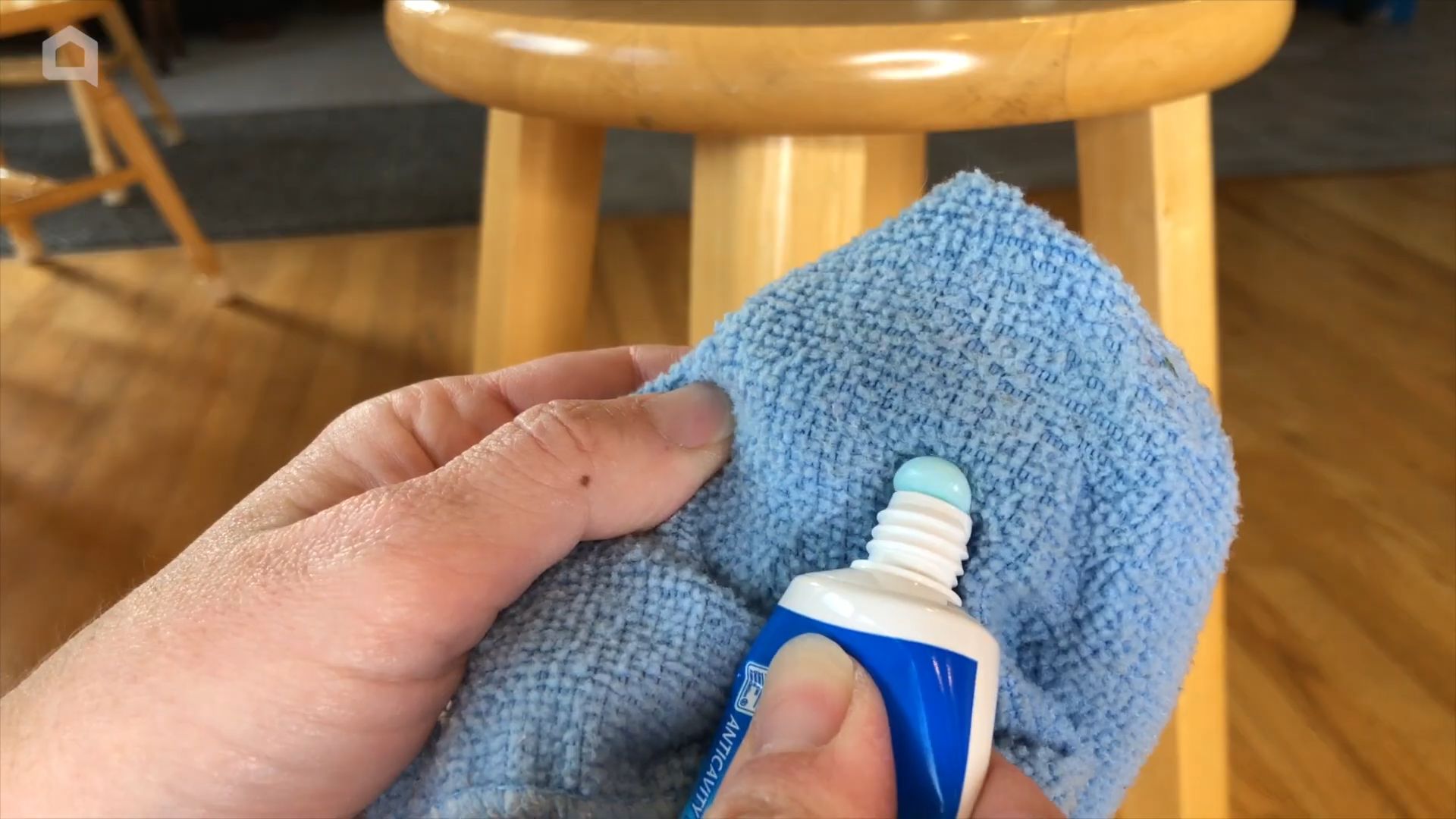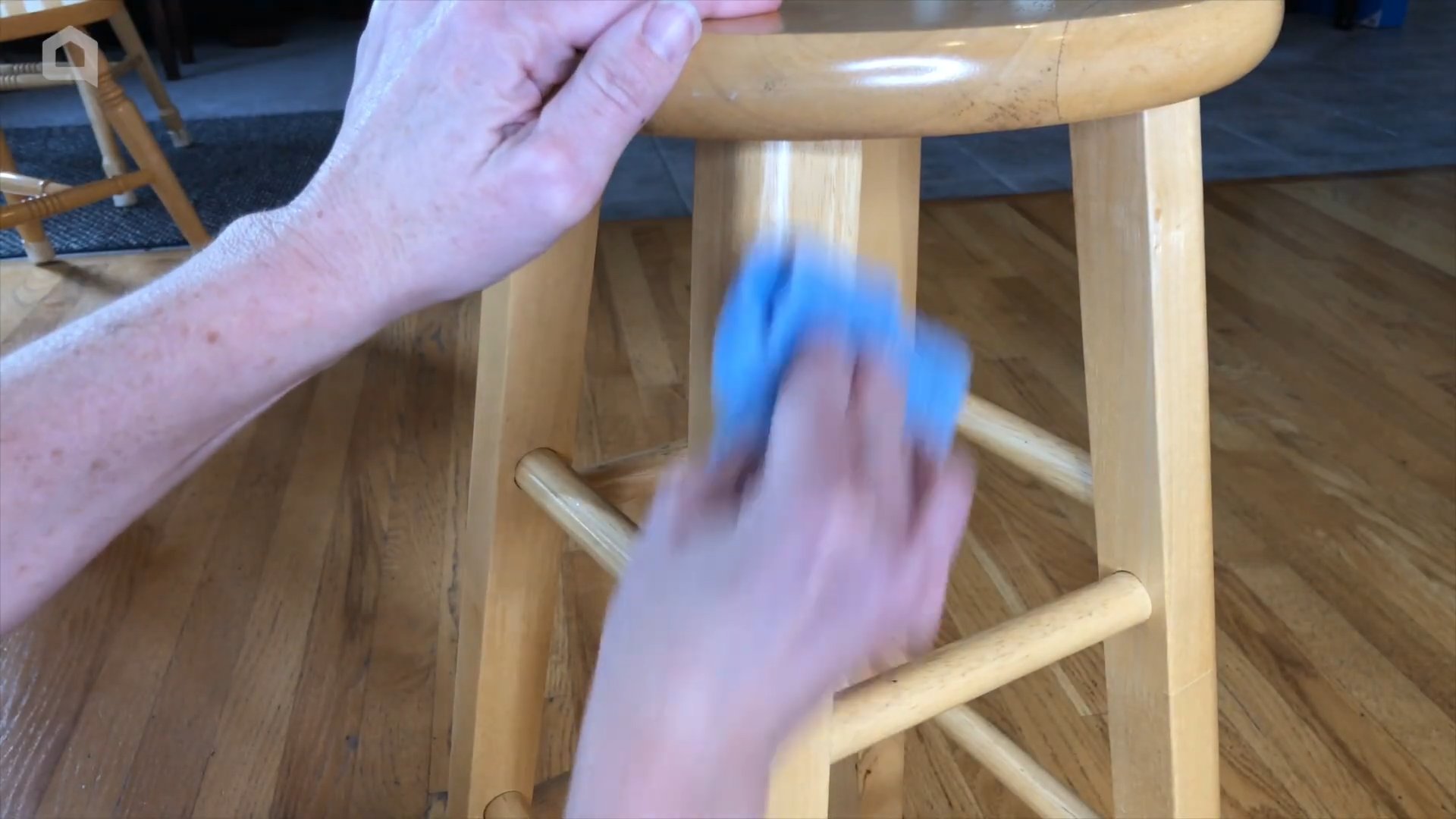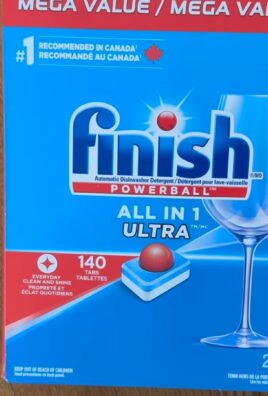Toothpaste cleaning hacks – who knew that humble tube in your bathroom could be your secret weapon for a sparkling home? I’m always on the lookout for clever, budget-friendly ways to tackle household chores, and let me tell you, I was blown away by the versatility of toothpaste! Forget harsh chemicals and expensive cleaners; this DIY guide will unlock the surprising cleaning power hidden within your everyday toothpaste.
While toothpaste has been around in various forms for centuries – ancient Egyptians used a powder made from pumice and vinegar! – its modern formulation and unexpected cleaning applications are relatively recent discoveries. Think about it: toothpaste is designed to gently polish and remove stains from your teeth. It makes perfect sense that it can work wonders on other surfaces too!
In today’s world, we’re all looking for ways to save money and reduce our reliance on harsh chemicals. That’s where these toothpaste cleaning hacks come in. From shining silverware to removing stubborn stains from clothing, I’m going to show you how to use this readily available product to achieve a cleaner, brighter home without breaking the bank. Get ready to be amazed by the cleaning potential of toothpaste – you’ll never look at that tube the same way again!

DIY Toothpaste Cleaning Hacks: Beyond Brushing Your Teeth!
Hey there, fellow DIY enthusiasts! I’m here to let you in on a little secret: toothpaste isn’t just for pearly whites. This humble tube is actually a powerhouse cleaner, capable of tackling a surprising number of household messes. Get ready to be amazed by these toothpaste cleaning hacks that will save you time, money, and maybe even a little elbow grease!
Why Toothpaste Works as a Cleaner
Before we dive into the hacks, let’s understand why toothpaste is such a versatile cleaner. It’s all about the ingredients!
* Mild Abrasives: Toothpaste contains gentle abrasives like hydrated silica or calcium carbonate. These help scrub away stains and grime without being overly harsh on surfaces.
* Detergents: The detergents in toothpaste help to lift dirt and grease, making it easier to wipe away.
* Fluoride: While not directly involved in cleaning, fluoride can help prevent the buildup of certain types of stains.
* Other Ingredients: Some toothpastes contain ingredients like baking soda or hydrogen peroxide, which further enhance their cleaning power.
Important Note: Always use *white, non-gel toothpaste* for these hacks. Gel toothpastes and those with added colors can sometimes stain surfaces. And as with any cleaning product, test a small, inconspicuous area first to ensure it doesn’t damage the material.
Hack 1: Shining Silverware and Jewelry
Tarnished silverware and jewelry can look dull and lifeless. But don’t worry, toothpaste can bring back their sparkle!
What You’ll Need:
* White, non-gel toothpaste
* Soft cloth or toothbrush
* Warm water
Step-by-Step Instructions:
1. Apply Toothpaste: Squeeze a small amount of toothpaste onto the tarnished silver or jewelry. You don’t need a lot – a pea-sized amount is usually enough for a small item.
2. Gently Rub: Using a soft cloth or toothbrush, gently rub the toothpaste onto the surface of the silver or jewelry. Focus on areas with heavy tarnish. Be careful not to scrub too hard, especially on delicate items.
3. Rinse Thoroughly: Rinse the silver or jewelry thoroughly with warm water to remove all traces of toothpaste.
4. Dry and Polish: Use a clean, dry cloth to dry and polish the silver or jewelry. You’ll be amazed at the difference!
Hack 2: Removing Water Rings from Wood Furniture
Those pesky water rings on your wooden furniture are a common annoyance. Toothpaste to the rescue!
What You’ll Need:
* White, non-gel toothpaste
* Soft cloth
* Damp cloth
Step-by-Step Instructions:
1. Apply Toothpaste: Apply a small amount of toothpaste directly onto the water ring.
2. Gently Rub: Gently rub the toothpaste into the water ring using a soft cloth. Use a circular motion and avoid applying too much pressure.
3. Wipe Clean: Wipe away the toothpaste with a damp cloth.
4. Dry Thoroughly: Dry the area thoroughly with a clean, dry cloth. You may need to repeat this process a few times for stubborn water rings.
Hack 3: Cleaning Chrome Fixtures
Chrome fixtures in your bathroom and kitchen can easily become dull and stained with water spots. Toothpaste can restore their shine.
What You’ll Need:
* White, non-gel toothpaste
* Soft cloth or sponge
* Warm water
Step-by-Step Instructions:
1. Apply Toothpaste: Apply a small amount of toothpaste to the chrome fixture.
2. Rub and Scrub: Using a soft cloth or sponge, rub the toothpaste onto the fixture, paying attention to areas with water spots or stains.
3. Rinse Thoroughly: Rinse the fixture thoroughly with warm water to remove all traces of toothpaste.
4. Dry and Polish: Dry the fixture with a clean, dry cloth to reveal its shine.
Hack 4: Removing Scuff Marks from Shoes
Scuff marks on your shoes can make them look old and worn. Toothpaste can help you get rid of them.
What You’ll Need:
* White, non-gel toothpaste
* Old toothbrush or soft cloth
* Warm water
Step-by-Step Instructions:
1. Apply Toothpaste: Apply a small amount of toothpaste to the scuff mark.
2. Gently Scrub: Using an old toothbrush or soft cloth, gently scrub the scuff mark with the toothpaste.
3. Wipe Clean: Wipe away the toothpaste with a damp cloth.
4. Dry Thoroughly: Dry the area thoroughly with a clean, dry cloth. Repeat if necessary for stubborn scuff marks. This works best on leather or rubber shoes.
Hack 5: Cleaning Your Iron
The soleplate of your iron can accumulate residue from fabrics, making it stick and potentially damage your clothes. Toothpaste can help clean it.
What You’ll Need:
* White, non-gel toothpaste
* Soft cloth
* Warm water
Important Note: Make sure your iron is *unplugged and completely cool* before starting this process.
Step-by-Step Instructions:
1. Apply Toothpaste: Apply a thin layer of toothpaste to the cool soleplate of the iron.
2. Gently Rub: Gently rub the toothpaste onto the soleplate using a soft cloth. Focus on areas with residue buildup.
3. Wipe Clean: Wipe away the toothpaste with a damp cloth.
4. Dry Thoroughly: Dry the soleplate thoroughly with a clean, dry cloth.
5. Test the Iron: Before using the iron on your clothes, test it on an old cloth to ensure all the toothpaste residue is gone.
Hack 6: Defogging Bathroom Mirrors
Tired of foggy bathroom mirrors after a hot shower? Toothpaste can help prevent that!
What You’ll Need:
* White, non-gel toothpaste
* Soft cloth
* Warm water
Step-by-Step Instructions:
1. Apply Toothpaste: Apply a thin layer of toothpaste to the entire surface of the mirror.
2. Rub and Spread: Rub the toothpaste onto the mirror using a soft cloth, spreading it evenly.
3. Wipe Clean: Wipe away the toothpaste with a damp cloth.
4. Dry Thoroughly: Dry the mirror thoroughly with a clean, dry cloth. This will leave a thin film that prevents fogging. You may need to reapply occasionally.
Hack 7: Removing Crayon Marks from Walls
Kids love to express their creativity, but sometimes that creativity ends up on your walls in the form of crayon marks. Toothpaste can help you remove them.
What You’ll Need:
* White, non-gel toothpaste
* Soft cloth
* Warm water
Step-by-Step Instructions:
1. Apply Toothpaste: Apply a small amount of toothpaste to the crayon marks.
2. Gently Rub: Gently rub the toothpaste onto the crayon marks using a soft cloth.
3. Wipe Clean: Wipe away the toothpaste with a damp cloth.
4. Dry Thoroughly: Dry the area thoroughly with a clean, dry cloth. You may need to repeat this process a few times for stubborn crayon marks. Be careful not to rub too hard, as this could damage the paint.
Hack 8: Cleaning Your Cell Phone Screen
Your cell phone screen can get covered in fingerprints and smudges. Toothpaste can help clean it and restore its clarity.
What You’ll Need:
* White, non-gel toothpaste
* Soft, lint-free cloth
* Warm water
Important Note: Be extremely careful when cleaning your cell phone screen with toothpaste. Avoid getting any toothpaste in the phone’s openings.
Step-by-Step Instructions:
1. Apply Toothpaste: Apply a *very small* amount of toothpaste to a soft, lint-free cloth.
2. Gently Rub: Gently rub the cloth onto the screen, focusing on areas with fingerprints and smudges.
3. Wipe Clean: Wipe away the toothpaste with a slightly damp (not wet!) lint-free cloth.
4. Dry Thoroughly: Dry the screen thoroughly with a clean, dry lint-free cloth.
Hack 9: Removing Stains from Clothing (Use with Caution!)
Toothpaste can sometimes be used to remove certain types of stains from clothing, but it’s important to proceed with caution and test a small, inconspicuous area first.
What You’ll Need:
* White, non-gel toothpaste
* Soft cloth
* Warm water
Step-by-Step Instructions:
1

Conclusion
So, there you have it! This isn’t just another cleaning tip; it’s a revelation. The versatility of toothpaste extends far beyond oral hygiene, offering a surprisingly effective and readily available solution for a multitude of household cleaning challenges. From restoring the sparkle to your jewelry to banishing stubborn stains from your clothing, the power of toothpaste is truly remarkable.
Why is this DIY trick a must-try? Because it’s simple, cost-effective, and readily accessible. You likely already have a tube of toothpaste in your bathroom, making it a convenient alternative to harsh chemicals and expensive cleaning products. It’s also a gentler option for delicate surfaces, minimizing the risk of damage while still delivering impressive results. Plus, who doesn’t love the satisfying feeling of transforming something old and dull into something shiny and new with minimal effort?
Consider these variations to tailor the toothpaste cleaning power to your specific needs. For tougher stains on clothing, try mixing a small amount of baking soda with the toothpaste to create a more abrasive paste. When cleaning electronics, always ensure the device is unplugged and use a slightly damp cloth to apply the toothpaste, being careful to avoid getting moisture into any openings. For silverware, a soft toothbrush can help reach intricate details and crevices. Experiment with different types of toothpaste – whitening toothpaste can be particularly effective on certain stains, while gel toothpaste may be gentler on delicate surfaces. Remember to always test a small, inconspicuous area first to ensure compatibility.
Don’t just take our word for it – experience the magic of toothpaste cleaning for yourself! We’re confident that you’ll be amazed by the results. Whether you’re tackling scuffed shoes, tarnished silverware, or stubborn bathroom grime, toothpaste offers a surprisingly effective and eco-friendly solution.
We encourage you to try these toothpaste cleaning hacks and share your experiences with us! Let us know which tips worked best for you, any variations you discovered, and any surprising uses you found for this everyday essential. Your feedback will help us refine these techniques and share even more helpful cleaning solutions with our community. Share your before-and-after photos and cleaning triumphs on social media using #ToothpasteCleaningHacks – we can’t wait to see your sparkling results! Embrace the power of toothpaste and transform your cleaning routine today!
Frequently Asked Questions (FAQs)
What type of toothpaste is best for cleaning?
Generally, plain white toothpaste (not gel) is recommended for most cleaning tasks. Avoid using heavily abrasive toothpastes, especially on delicate surfaces, as they can cause scratching. Whitening toothpaste can be effective for removing certain stains due to its mild abrasive properties, but always test it on an inconspicuous area first. Gel toothpastes are generally less abrasive and may be suitable for more delicate items. Ultimately, the best type of toothpaste depends on the specific cleaning task and the surface you’re cleaning. Experiment to see what works best for you, but always err on the side of caution and test first.
Can I use toothpaste to clean my phone screen?
Yes, but with extreme caution! Toothpaste can be used to remove minor scratches from phone screens, but it’s crucial to use a very small amount of non-gel toothpaste and apply it gently with a soft, lint-free cloth. Rub in a circular motion for a short period, then wipe away the residue with a clean, damp cloth. Be extremely careful to avoid getting any toothpaste into the phone’s ports or openings. It’s generally safer to use a screen protector and replace it when scratched, or to use a screen-specific scratch remover. We advise against using toothpaste on phone screens unless you’re comfortable with the risk of further damage.
Is toothpaste safe to use on all surfaces?
No, toothpaste is not safe for all surfaces. Avoid using it on porous materials like unsealed wood or natural stone, as it can stain or damage them. It’s also not recommended for use on painted surfaces, as it can dull the finish. Always test toothpaste on a small, inconspicuous area before applying it to the entire surface. If you’re unsure whether toothpaste is safe for a particular surface, consult the manufacturer’s instructions or a professional cleaner.
How do I remove toothpaste residue after cleaning?
The best way to remove toothpaste residue is with a clean, damp cloth. Wipe the area thoroughly until all traces of toothpaste are gone. For stubborn residue, you can use a mild soap solution followed by a clean water rinse. Ensure the surface is completely dry after cleaning to prevent water spots or damage.
Can toothpaste remove permanent marker stains?
Toothpaste can sometimes help remove permanent marker stains, especially from non-porous surfaces like plastic or metal. Apply a small amount of non-gel toothpaste to the stain and rub gently with a clean cloth. The mild abrasives in the toothpaste can help lift the ink. You may need to repeat the process several times. For more stubborn stains, you can try combining toothpaste with baking soda. However, keep in mind that toothpaste may not be effective on all types of permanent marker or on all surfaces.
Will toothpaste damage my jewelry?
Toothpaste can be used to clean certain types of jewelry, particularly silver and gold. However, avoid using it on delicate gemstones like pearls, opals, or emeralds, as it can scratch or damage them. Use a soft toothbrush to gently scrub the jewelry with a small amount of non-gel toothpaste, then rinse thoroughly with water and dry with a soft cloth. For delicate jewelry, it’s best to consult a professional jeweler for cleaning advice.
Can I use toothpaste to clean my car headlights?
Yes, toothpaste can be used to clean cloudy or yellowed car headlights. Apply a generous amount of non-gel toothpaste to the headlight and rub it in using a circular motion with a damp cloth or sponge. Rinse thoroughly with water and dry with a clean cloth. You may need to repeat the process several times for heavily oxidized headlights. This can significantly improve headlight clarity and visibility.
How often should I use toothpaste for cleaning?
The frequency of using toothpaste for cleaning depends on the specific item and how often it needs cleaning. For items like jewelry or shoes, you may only need to clean them with toothpaste occasionally. For items that get dirty more frequently, like bathroom fixtures, you may need to clean them more often. Always assess the item’s condition and clean it as needed, but avoid over-cleaning, as this can potentially damage the surface.
What are the environmental considerations of using toothpaste for cleaning?
While toothpaste is generally considered a safer alternative to harsh chemical cleaners, it’s important to be mindful of its environmental impact. Some toothpastes contain ingredients like triclosan or microbeads, which can be harmful to the environment. Choose toothpastes that are free of these ingredients and opt for eco-friendly brands whenever possible. Additionally, use toothpaste sparingly and avoid excessive rinsing to minimize water waste. Consider using natural cleaning alternatives like baking soda, vinegar, or lemon juice for certain tasks to further reduce your environmental footprint.




Leave a Comment